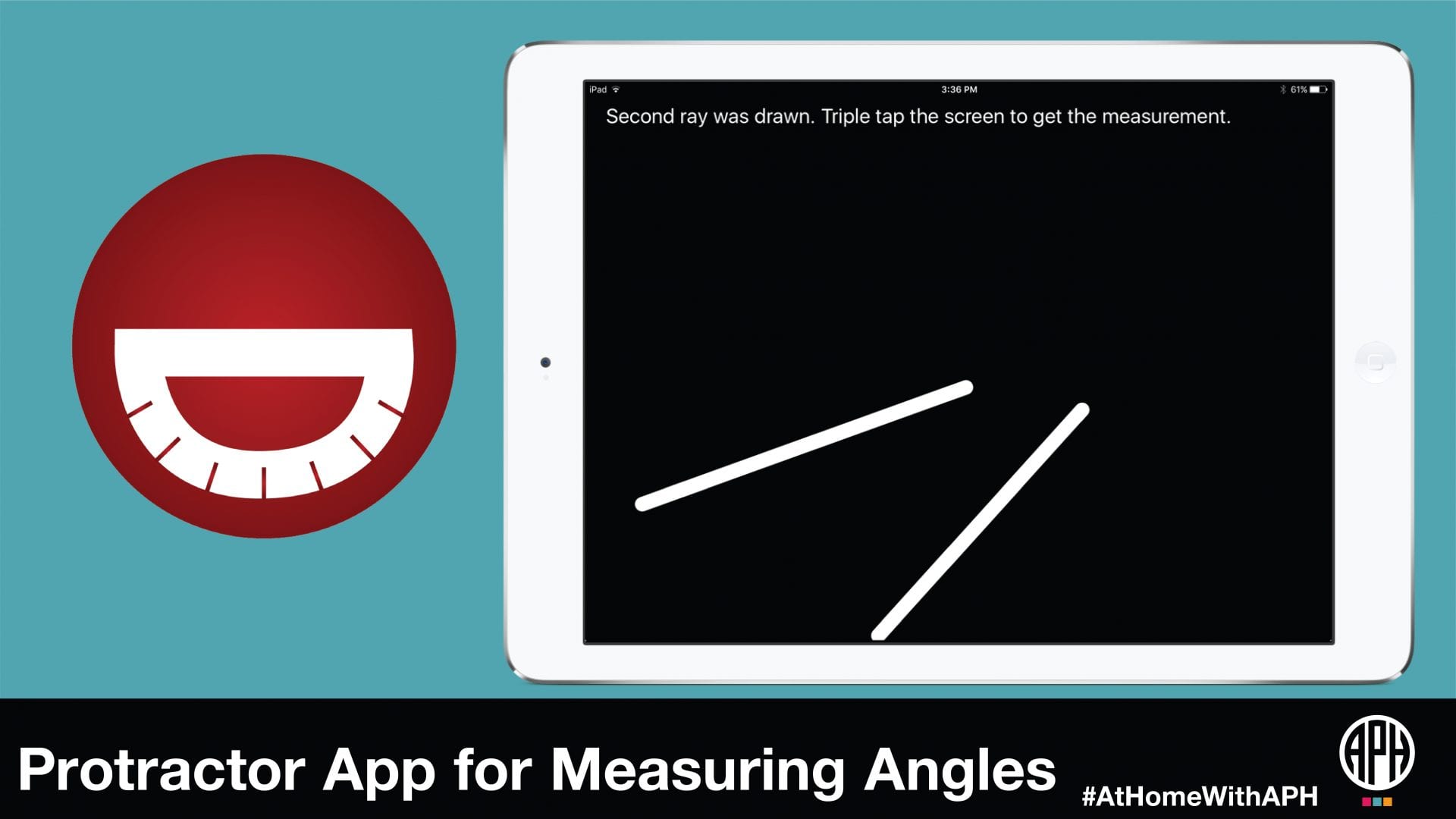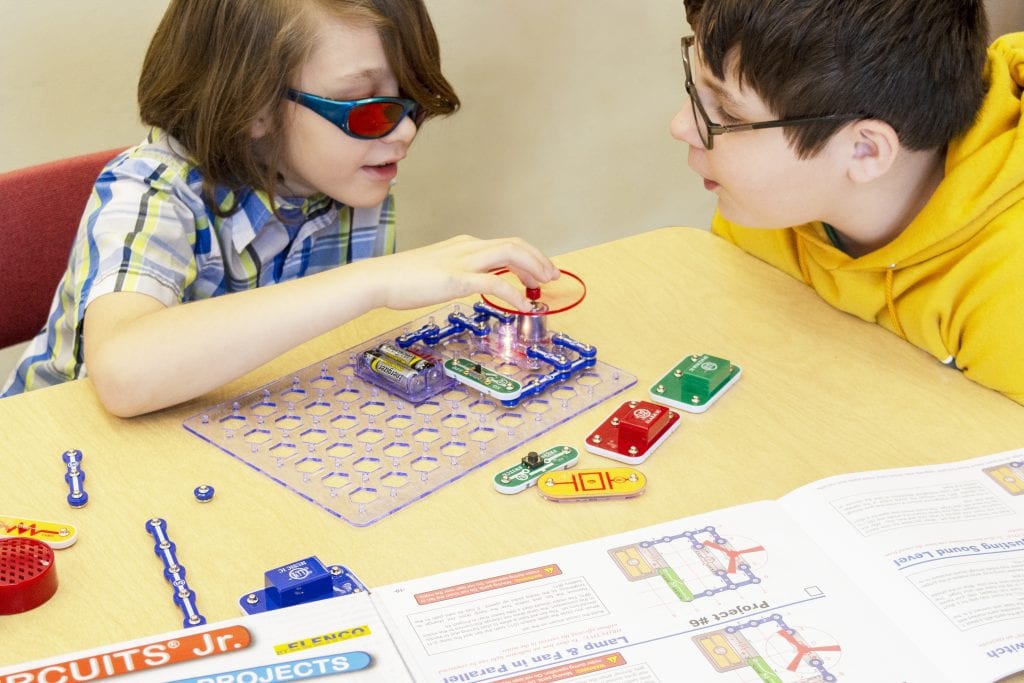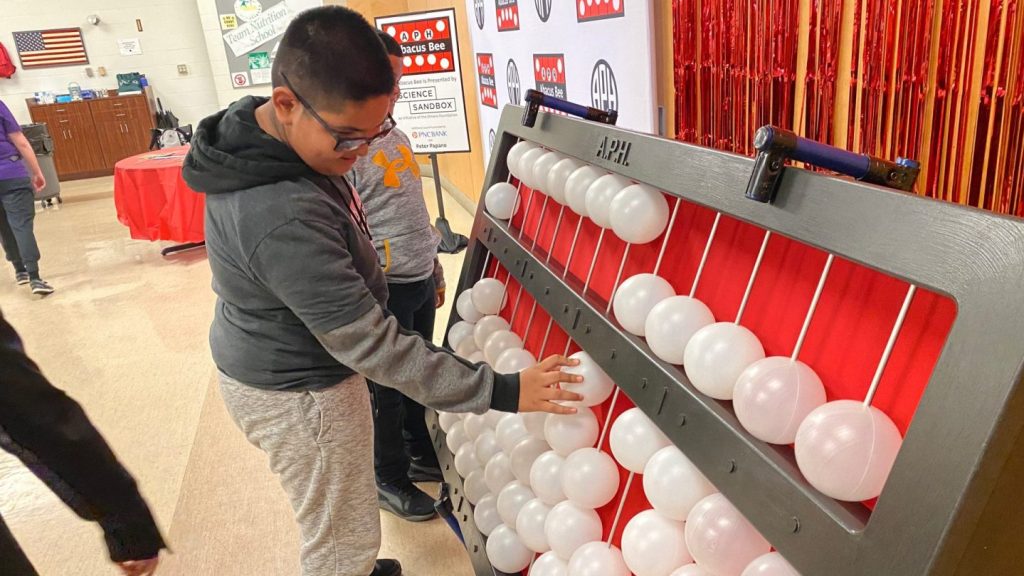Measure Angles Anywhere

Looking for a fun way for your elementary school child to practice their math skills? How about measuring angles using an iPad or iPhone? Try the Draw2Measure Protractor app from American Printing House for the Blind. High school students, if you want to challenge your trigonometry knowledge and see an example of how mathematics is used in application development, you will also find this little app very interesting!
Draw2Measure Protractor gives students who are visually impaired an alternative way to measure angles. It is a free app designed for iPad, iPhone, or iPod Touch. Download the app from the App Store on your device.
Activity for elementary school students: Measure the angles around you.
What objects in your room have acute angles? Can you find anything around you that has an obtuse angle?
The Draw2Measure Protractor app allows students to measure angles in two ways. First, students can place an angle over the screen of a device, such as a phone or tablet, and trace along the sides of the angle with a fingertip or stylus. The app records the locations of the sides and then calculates the angle.
For objects that may not fit on a screen, students can find measurements by rotating the device itself, which utilizes a built-in gyroscope sensor to measure the angle. Go to the How to Use section for step-by-step instructions as well as a demonstration video.
Challenge for high school students: Can you figure out how angles are calculated?
Thinking from the perspective of an app developer, the device screen is like a coordinate plane in mathematics. Every point on the screen has its unique x and y coordinate combination (x, y). After a user of this app draws a line along one side of an angle, the app receives the coordinates of many points on that same line (e.g., 60 to 70 points, depending on how long the line is drawn). The app will only select two points, one close to the beginning of the line (let’s call it point A), and another one close to the end of the line (point B). Then from the second line the app will also get two points C and D. Given the coordinates of points A, B, C, and D, do you know how the app calculates the angle between line AB and line CD? How many ways are there to do that? Just a hint, you will need to use your trigonometry knowledge. Share with your math teacher what you find out.
Happy learning!
For more resources please check out our #AtHomeWithAPH resource list for free and accessible activities, tips, webinars, and more from APH, our partners, and the field at large. Have a free and accessible resource you would like us to include? Email us at communications@aph.org to tell us about it!
Share this article.
Related articles

10 STEM Products for Inclusive Classrooms
This blog was originally published in 2019 as “8 STEM Products for Inclusive Classrooms.” It has been updated to include two...

What Does Accessibility Mean to You?
Have you ever considered how something that many people use every day, like a kitchen appliance, social media platform, or...

Testing Math Skills with the Abacus Bee
Created in China in 1200 C.E., the abacus is an ancient tool used by generations of mathematicians and students before...
